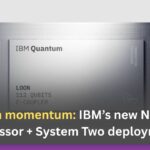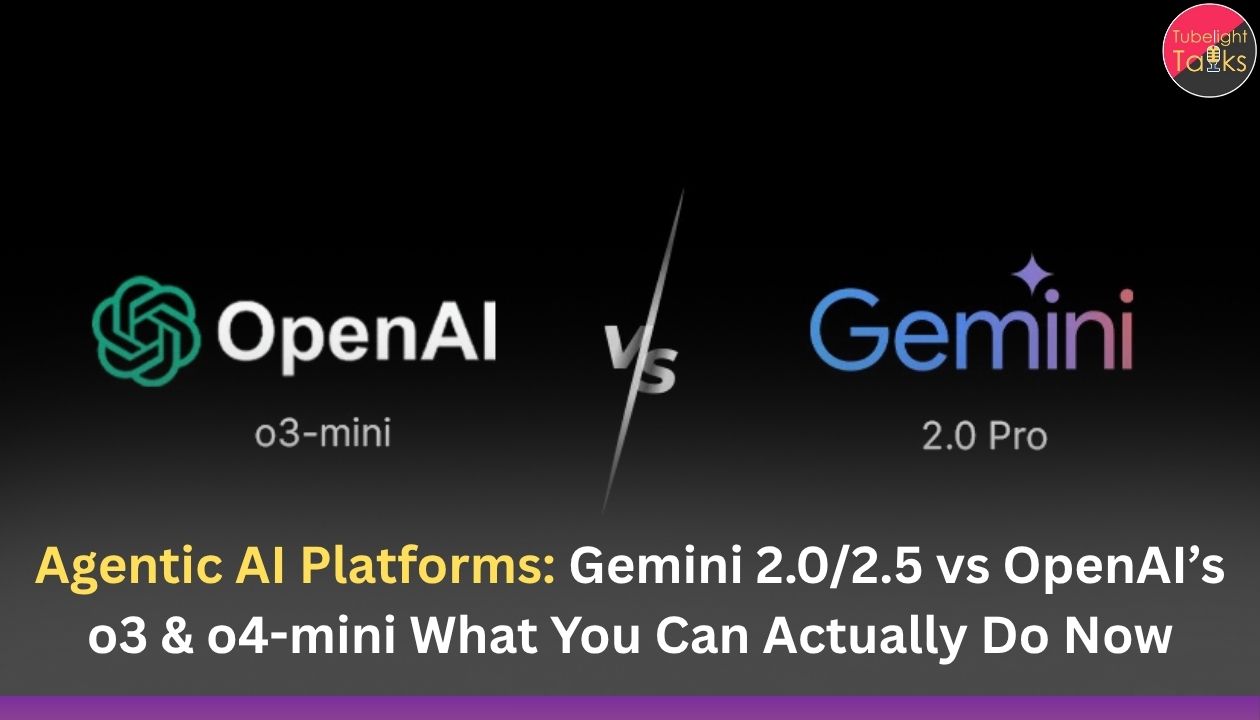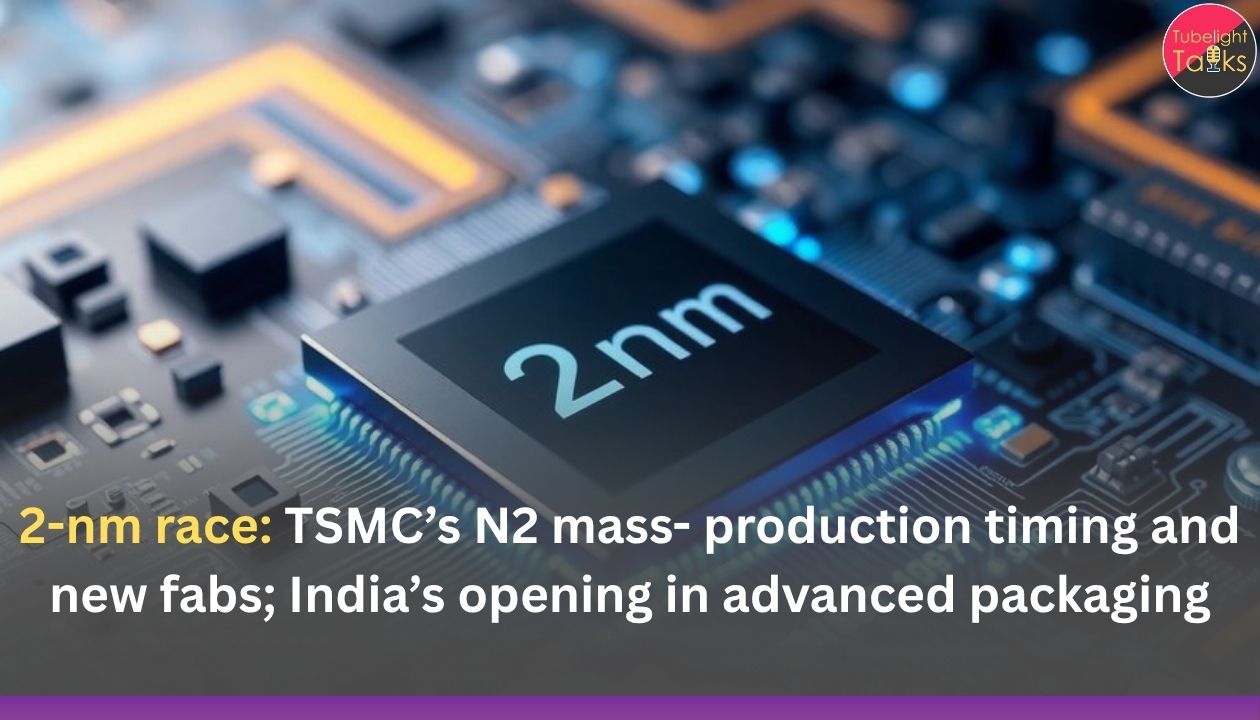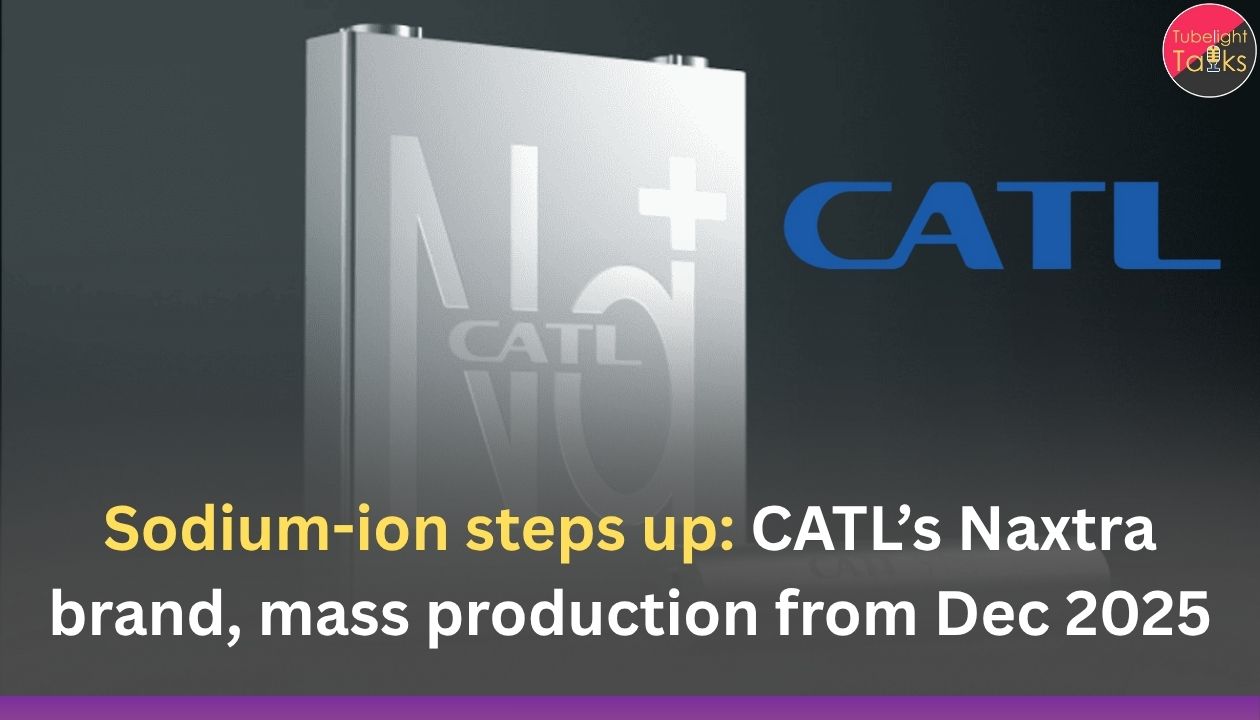Agentic AI Platforms: Google’s agentic stack has moved from demos to developer docs Gemini 2.5 Flash (price-performance “workhorse”), Computer Use that operates a web browser end-to-end, and Gemini Robotics models that plan and control real robots. OpenAI, meanwhile, has leaned into small, reasoning-centric models—o3/o3-mini and o4-mini—aimed at fast coding/math and cheaper deployment.
Together, they sketch a near-term map for coding agents, UI/web automations, embodied robots, and low-latency/edge-friendly experiences.
What Google shipped (and where it lands)
- Gemini 2.5 Flash → GA across Google AI Studio/Vertex AI; billed as the best price-performance model, now with native audio output and improved “thinking” for agentic tasks. Ideal for large-scale, low-latency orchestration (summarize→reason→act loops).
- Computer Use → A model that drives a browser like a human (open, click, type, drag) to complete multi-step tasks on sites without APIs—useful for RPA-style web flows and UI testing. Demos ship via AI Studio/Vertex.
- Gemini Robotics / Robotics-ER → Vision-language-action models (based on Gemini 2.0) that handle perception → planning → code generation to control arms/mobile bases; Google reports 2–3× success over earlier baselines in end-to-end settings.
- Flash-Lite preview & Robotics-ER updates → New previews in the Gemini API changelog signal lighter, latency-sensitive options and ongoing robotics improvements.
Why it matters: Agents can now reason, browse, and click—not just call APIs—and the same family is pushing into embodied control.
What OpenAI shipped (and why devs care)
- o3 / o3-mini → Small, reasoning-focused series tuned for STEM/coding with low cost/latency; o3-mini is available in ChatGPT & API and targets fast loops (think unit-tests, code fixes, math/logic).
- o4-mini → A compact model that punches above weight on math/coding/vision benchmarks at much lower cost than flagship models—positioned for high-QPS products and edge-conscious deployments.
- Availability signals → Release notes show o3/o4-mini selectable in ChatGPT; enterprises can wire them into tool-use chains in the API.
Why it matters: Reasonable agent brains no longer require frontier-model budgets; you can run more calls, more often, and keep latency down for interactive tools.
Concrete use-cases (right now)
For coders
- Code agents that open tickets, propose diffs, run tests, and file PRs—Flash handles web tools; o3/o4-mini keep loops snappy and cheap.
- UI regression & form testing with Gemini Computer Use executing human-style browser actions across QA suites.
For robots
- Pick-and-place & mobile tasks in labs/warehouses using Gemini Robotics / Robotics-ER for spatial reasoning + control code, with in-context learning from a few demos.
For on-device / low-latency
- Edge-friendly assistants where small models (e.g., o4-mini, o3-mini) trim cost/latency; on the Google side, Flash/Flash-Lite previews target fast inference paths when paired with efficient runtimes. (Exact on-device footprints depend on your hardware/toolchain.)
Buyer’s checklist (to cut through “agent-washing”)
- Does it act beyond chat? Look for browser/UI control or tool APIs—not just text planning. (Gemini Computer Use is a clear marker.)
- Latency & cost at scale: Compare tokens/sec & $/1M tokens; Flash is positioned for high-volume agent loops.
- Safety & auditability: Prefer action logs, screenshot trails, and human-in-the-loop gates for risky steps.
- Reality check: Gartner warns >40% of agentic projects may be scrapped by 2027 over cost/ROI—start with narrow wins.
2026 watch-list
- Public benchmarks for computer-use agents on tough web/mobile flows.
- Robotics trials moving from labs to pilot lines (pick/pack, retail, light assembly).
- Cost curves on Flash vs small-OpenAI models at production QPS.
- Security hardening (credential vaults, domain allow-lists) for agents that click/buy/post.
Bottom line – From clever chats to clickable actions
Google’s Gemini 2.5 ecosystem is making agents that see, browse, and do, including on robots; OpenAI’s o3/o4-mini make fast, affordable reasoning practical for code and apps. The next twelve months will be about proof: repeatable tasks, clear audit trails, and unit economics that scale. If that lands, “agentic AI” stops being a slide and starts being software that gets things done.
Guidance with a Human Core
Drawing on Sant Rampal Ji Maharaj’s emphasis on dignified living, agentic rollouts should follow a few simple rules: publish action logs & audit trails for browser/robot steps, set allow-lists and human-in-the-loop gates for risky clicks, run energy and time budgets for large agent farms, and reserve capacity for public-interest use—assistive coding for students, accessibility tasks, and safety-critical automation. That’s how “agents that act” become tools that serve.
Read Also: Top Agentic AI Techniques to Revolutionize Automation in 2025
FAQs: Agentic AI Platforms goes live
1) What is Gemini “Computer Use” in plain words?
A model that sees screenshots and outputs UI actions (clicks/keys) so agents can complete multi-step tasks on sites without APIs—available via the Gemini API.
2) Where does Gemini 2.5 Flash fit vs other models?
It’s Google’s best price-performance general model with improved “thinking” capabilities—good for high-volume, low-latency agent loops.
3) What is “Gemini Robotics”?
A vision-language-action stack (incl. Robotics-ER) that handles perception→planning→control; Google reports 2–3× higher task success than earlier baselines.
4) How do OpenAI’s o3 / o4-mini differ from big models?
They’re smaller, reasoning-centric models tuned for coding/math with lower cost/latency, suitable for fast loops and edge-conscious apps.
5) Any quick buyer tips to avoid “agent-washing”?
Check that the stack acts beyond chat (browser or tool control), compare latency and $/token for your QPS, and insist on action logs + approvals for sensitive steps.










